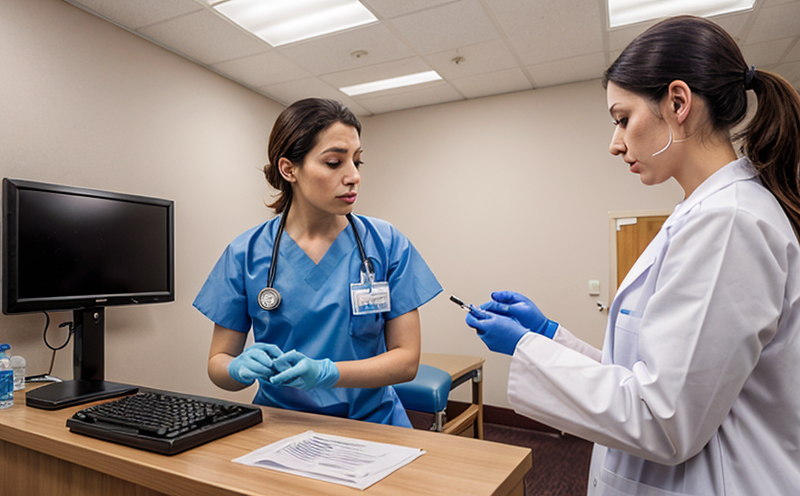Zearalenone Mycotoxin Testing in Livestock Feed
Understanding zearalenone contamination is critical for maintaining livestock health and ensuring food safety. Zearalenone, a potent mycotoxin produced by certain species of Fusarium fungi, can be found in grains used as feed ingredients. Contamination with this toxin can lead to reproductive disorders, hormonal imbalances, and reduced performance in livestock animals.
Our laboratory offers comprehensive zearalenone testing services for livestock feed, ensuring compliance with international standards such as ISO 15278:2014 and EU regulations on mycotoxin limits. The primary goal of our testing is to provide accurate data that enables producers to make informed decisions regarding their feed quality.
The testing process involves several steps, starting from the collection of feed samples. Samples are meticulously prepared using standardized protocols before being analyzed using liquid chromatography-tandem mass spectrometry (LC-MS/MS). This method ensures precise quantification, even at trace levels. The results provide actionable insights into potential contamination risks.
Our expertise in this area extends beyond just testing; we also offer guidance on mitigation strategies and best practices to prevent future incidents of zearalenone contamination. By partnering with us, clients gain access to cutting-edge technology and experienced professionals who are dedicated to delivering reliable test results within strict deadlines.
The importance of zearalenone testing cannot be overstated in today's competitive market. Ensuring feed safety is not only a legal requirement but also a moral obligation towards animal welfare. Our commitment to accuracy, efficiency, and reliability sets us apart as the premier choice for all your mycotoxin testing needs.
With our state-of-the-art facilities and experienced team of analysts, we ensure that every test conducted meets the highest standards of precision and integrity. Whether you are a small-scale farmer or part of an international corporation, trust in our ability to deliver accurate results consistently.
International Acceptance and Recognition
- ISO 15278:2014: This standard specifies methods for the determination of mycotoxins in animal feed, including zearalenone. It ensures that laboratories adhere to strict protocols ensuring accurate results.
- EU Regulation (EC) No 1881/2006: This regulation sets maximum levels for zearalenone in animal feed and provides a framework for monitoring compliance across member states.
Our laboratory is accredited to perform tests according to these international standards, ensuring that our findings are recognized worldwide. Compliance with such regulations enhances trust among stakeholders and supports global trade by providing consistent quality assurance.
Competitive Advantage and Market Impact
The ability to accurately detect and quantify zearalenone in livestock feed provides significant competitive advantages. For producers, it means maintaining a high standard of animal health which translates into better performance metrics such as weight gain rates and reproductive efficiency.
In the broader market context, ensuring compliance with international standards not only protects against legal penalties but also enhances brand reputation. Consumers increasingly demand transparency regarding food safety practices; having reliable test results can bolster consumer confidence in your products.
Moreover, early detection allows for prompt corrective actions like adjusting feed formulations or sourcing alternative ingredients, thereby minimizing economic losses associated with suboptimal performance due to contaminated feeds.
Use Cases and Application Examples
- Feed Quality Assurance: Routine testing helps maintain consistent feed quality by identifying potential contamination issues early on, allowing for timely interventions.
- Supply Chain Monitoring: Periodic checks during the supply chain ensure that all parties involved meet agreed-upon standards before final product delivery.
- Sourcing Decisions: When selecting new suppliers or ingredients, testing can help avoid risks associated with unexpected contamination incidents.
Our services are applicable across various sectors including commercial farms, research institutions, and regulatory bodies involved in enforcing food safety laws. By leveraging our expertise, these entities benefit from enhanced product quality assurance and compliance capabilities.





